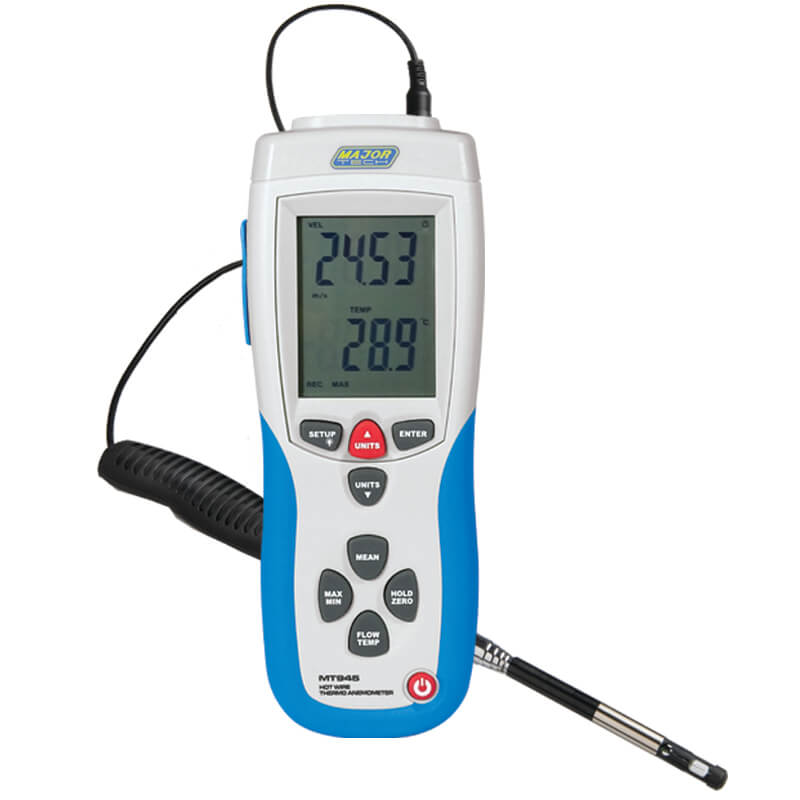Selecting the Right Anemometer: A Comprehensive Acquiring Overview
Wiki Article
All You Required to Find Out About Anemometers: Exactly How They Work, Why They Issue, and Where to Use Them
Anemometers, though frequently overlooked in the world of scientific instruments, play an essential role in various fields, offering important insights into wind speed and airflow patterns. As we dig into the complexities of anemometer modern technology, we will certainly reveal the internal workings of these gadgets, their relevance, and the key considerations when picking the ideal anemometer for details applications.
Anemometer Basics
A vital instrument made use of to gauge wind rate and instructions, the anemometer plays an important duty in meteorology and numerous markets. An anemometer typically is composed of 3 or 4 mugs that revolve in the wind, a vane that aims right into the wind, and sensing units to track the rotations or movements.
There are numerous types of anemometers offered, consisting of mug anemometers, vane anemometers, hot-wire anemometers, and sonic anemometers, each with its one-of-a-kind features and applications. Cup anemometers are typically utilized for standard wind speed measurements, while vane anemometers are liked for directional measurements.
Principles of Anemometer Operation
Structure on the foundational understanding of anemometer fundamentals, the concepts of anemometer operation elucidate the auto mechanics behind wind rate and direction measurements. Mug anemometers, for instance, have three or even more cups that catch the wind, causing them to spin much faster as the wind rate increases. Hot-wire anemometers count on a heated wire that cools down as wind passes over it, with the price of cooling down figuring out the wind rate.Relevance of Anemometers
Anemometers play an important function in determining wind rate and instructions, giving important data for weather forecasting, climate researches, ecological tracking, and air travel procedures. Meteorologists depend on anemometers to gather accurate wind data, helping them understand climate patterns, forecast tornados, and concern prompt cautions to the public. Wind farm operators use anemometers to evaluate wind conditions and maximize electricity production from wind turbines.Applications Throughout Numerous Industries
In the renewable energy industry, anemometers play a critical my latest blog post duty in assessing wind conditions for wind ranch positionings, making certain optimum energy production. Industries like construction and mining utilize anemometers to keep track of wind speeds, essential for security protocols, especially when working at elevations or in open-pit mines where solid winds can position risks. In farming, anemometers help farmers in taking care of plant spraying by offering real-time information on wind rate to prevent drift.
Selecting the Right Anemometer for Your Demands
For general functions, a cup anemometer is appropriate for determining wind rate, while a vane anemometer supplies wind instructions information. Hot-wire anemometers are excellent for reduced airspeed measurements, and ultrasonic anemometers provide high accuracy and resilience.
Conclusion
In conclusion, anemometers play a crucial function in gauging wind speed and direction throughout various markets. It is vital to take into consideration the value of anemometers in order to make enlightened decisions when picking the most appropriate device for determining wind conditions.There hop over to these guys are different types of anemometers readily available, including cup anemometers, vane anemometers, hot-wire anemometers, and sonic anemometers, each with its special functions and applications. Cup anemometers are typically utilized for fundamental wind speed dimensions, while vane anemometers are chosen for directional dimensions. Hot-wire anemometers are ideal for low airspeeds, and sonic anemometers are excellent for high-precision measurements in study and commercial settings.Building on the fundamental understanding of anemometer essentials, the principles of anemometer operation illuminate the auto mechanics behind wind rate and direction measurements. For general functions, a cup anemometer is appropriate for determining wind rate, while a vane anemometer provides wind direction data.
Report this wiki page